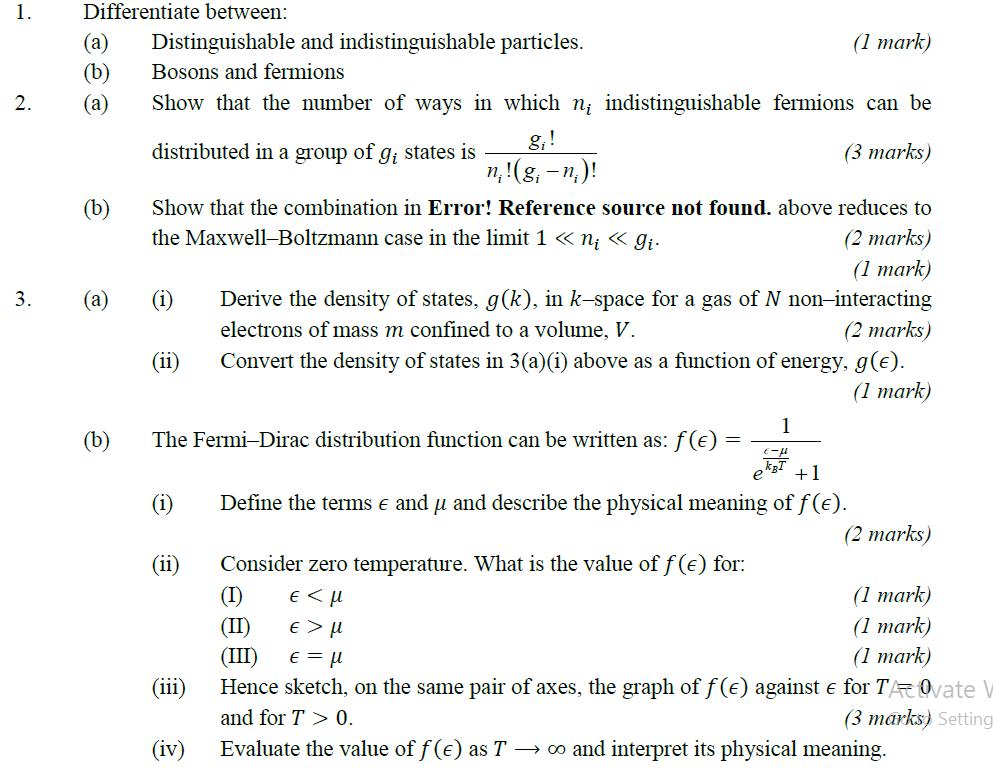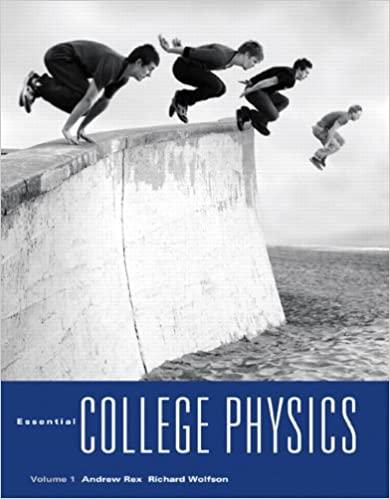Answered step by step
Verified Expert Solution
Question
1 Approved Answer
Differentiate between: 1. (a) 2. (a) (b) Distinguishable and indistinguishable particles. Bosons and fermions (1 mark) Show that the number of ways in which

Differentiate between: 1. (a) 2. (a) (b) Distinguishable and indistinguishable particles. Bosons and fermions (1 mark) Show that the number of ways in which n; indistinguishable fermions can be distributed in a group of g states is g! n!(g-n)! (3 marks) Show that the combination in Error! Reference source not found. above reduces to the Maxwell-Boltzmann case in the limit 1 < < ni gi (2 marks) (1 mark) 3. (a) Derive the density of states, g(k), in k-space for a gas of N non-interacting electrons of mass m confined to a volume, V. (2 marks) (ii) Convert the density of states in 3(a)(i) above as a function of energy, g(e). (1 mark) 1 (b) The Fermi-Dirac distribution function can be written as: f() +1 (i) Define the terms and and describe the physical meaning of f(e). (2 marks) (11) Consider zero temperature. What is the value of f(e) for: (I) (1 mark) (II) > l (1 mark) (III) = l (1 mark) (iii) (iv) (3 marks) Setting Evaluate the value of f(e) as T and interpret its physical meaning. Hence sketch, on the same pair of axes, the graph of f(e) against e for TA Ovate V and for T >0.
Step by Step Solution
There are 3 Steps involved in it
Step: 1

Get Instant Access to Expert-Tailored Solutions
See step-by-step solutions with expert insights and AI powered tools for academic success
Step: 2

Step: 3

Ace Your Homework with AI
Get the answers you need in no time with our AI-driven, step-by-step assistance
Get Started


